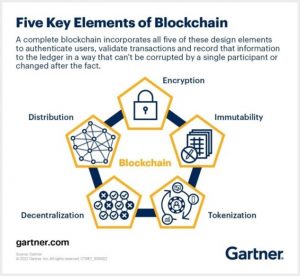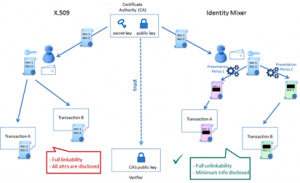Positioning Industry 4.0 – What it is
Businesses understand the promise of Industry 4.0: faster, smarter and more sustainable productivity. The difficult thing is making that promise a reality. Henrik von Scheel, management thinker and “father of Industry 4.0”, describes three key factors for the success of Industry 4.0: think about value, not technology; think people, not tools; and set clear goals from the beginning.
In an office in Australia, a team evaluates a digital twin-generated image of a copper and lithium mine. It is 100% accurate (digital replica of its physical counterpart). In the same instance, from Chile we incorporate cybersecurity into the project life cycle and address the application of cybersecurity both in hyper-convergent environments and in the global development of mines.
This is the face of the Fourth Industrial Revolution. Its transformative power comes from combining advanced production and operations techniques with digital technologies to create Industry 4.0 companies, connected companies that use data to drive intelligent actions in the physical world.
OT Environments and Cybersecurity.
Consider the scenario where a $5 wireless-enabled IoT temperature sensor and a $500,000+ port logistics management platform are on the same communications network. These do not come with the same investment in cybersecurity. Smart network visibility tools will be required to help define segmentation to group things that should communicate with each other and apply security controls aligned to the risks of these grouped devices.
Visibility, pillar of Industrial Cybersecurity 4.0
In the digital domain of Industry 4.0, visibility is key. In any digitized process, you need three things: (1) Data that is processed by (2) a “thing”, for example an IoT system (edge device); and (3) connectivity. Indeed, cybersecurity looks for expected patterns of behavior (“norms”) to make decisions.
To generate visibility, I prioritize three challenges:
- Standards are still immature globally, and Industry 4.0 IoT devices use their own communication languages. Some devices use encryption, which helps protect data, but makes it more difficult to understand ongoing communication and detect suspicious anomalies.
- You need to see the entire traffic flow to locate any problems. A device or thing always connects to its nearest antenna, which gives it a network address. The device moves and the identity changes. The protocols ensure that communication is fluid with the end device. But unless you have cybersecurity moving with the device, then you need to have cybersecurity tools that can re-correlate this traffic to find the actual object that is compromised due to a cyber attack or vulnerable to a future attack.
- Finally, security controls must understand traffic segmentation and prioritization controls. Network segmentation is an architectural approach that divides a network into several segments or subnetworks, each of which acts as its own small network; This allows network administrators to control the flow of traffic (and prioritize it as necessary) between subnets.
2024 challenges and trends of CI and Industry 4.0
The implementation of emerging technologies, such as blockchain and emerging methods such as ZKP, is rapidly transforming Industry 4.0, bringing a new dimension of security and efficiency to industrial cybersecurity. In this context, we will explore the benefits of their use in Industry 4.0 and how these technologies are revolutionizing the way companies manage their processes and operations.
Blockchain and cybersecurity in industry 4.0
Lockchain is an Internet-based technology that is prized for its ability to publicly validate, record, and distribute transactions on immutable, encrypted ledgers via a blockchain.

Image from gartner.com
At its core, a blockchain is a shared database. Specifically, the term refers to a secure, decentralized data record that cannot be changed and is formed over a peer-to-peer network.
The term “blockchain” is derived from the “blocks” of validated, immutable transactions and how they are linked together in chronological order to form a chain (document). Hence the term.
Ultimately, blockchain allows different organizations, in Industry 4.0, to share data securely and achieve common goals more efficiently.
Benefits of CI with the use of blockchain in Industry 4.0
Optimize supply chain transparency and traceability
• Provide end-to-end transparency.
• Monitor performance.
• Confirm origin.
• Increase visibility in real time.
Ensure security, immutability and authenticity.
• Authenticate data and documents.
• Detect fraud.
• Avoid theft.
Reduce process complexity
• Eliminate intermediaries.
• Improve quality assurance.
• Increase the level of automation.
Improve operational efficiency
• Improve compliance.
• Reduce transaction costs.
• Reduce human error.
Cybersecurity in Industry 4.0 – Zero-Knowledge Proofs (ZKP)
ZKP is a cryptographic method in which a prover can convince a verifier that he knows a secret value, without revealing any information other than the fact that he knows the secret value. While this requires some input from the verifier (e.g. challenging an answer), there is also a form of this model called non-interactive ZKP, which does not require such interaction between the two parties.

Avoid certificate binding using ZKP protocols like Idemix (Image credit)
Applications that benefit from ZKP in Industry 4.0 are those that require a measure of data privacy. Some of these example applications include:
- • The development of ZKP was inspired by authentication systems, where one party needed to prove its identity to a second party through secret information, but without completely revealing the secret.
• ZKP can allow blockchain transactions to be validated without the need to reveal the identity of users performing a transaction.
• Like anonymous systems, ZKP can be used to validate blockchain transactions without revealing pertinent information such as financial details.
Cybersecurity in Industry 4.0 – The Zero-Trust Model
Zero-Trust has as a basic principle that we should not trust anyone or anything just because it is within the perimeter of the organization. Forrester established the Zero-Trust model which focused on the guiding principle “Never trust, always verify.”

It is important to recognize that there is no single way to implement Zero-Trust. It requires a layered security approach that covers digital infrastructure, legacy and modern systems, with a focus on appropriate controls where the user accesses Industry 4.0 digital resources and less reliance on perimeter security. Some essential principles for implementing a Zero-Trust strategic roadmap:
- • Principle 1: Coherence in the authentication and authorization of users and digital resources.
• Principle 2: Secure all communications, regardless of network location.
• Principle 3: Apply access based on the principle of least privilege.
• Principle 4: Monitor and verify the security posture and integrity of all resources.
• Principle 5: Always refer to the guiding principles “Never trust, always verify” and “assume infringement.”
Cybersecurity, the most valuable component in Industry 4.0.
In conclusion, the close relationship between industrial cybersecurity and Industry 4.0 is a topic of vital importance in the current panorama.
The implementation of technologies such as Blockchain, ZKP and Zero-Trust invites us to think that the solutions to the new challenges that arise with the development of digital transformation and Industry 4.0 may have a good balance point, in relation to the cybersecurity that these technologies provide.
The convergence of Industry 4.0 and industrial cybersecurity not only represents a challenge, but also an opportunity to drive innovation and sustainable growth in industrial sectors. By proactively addressing cyber risks and promoting a culture of digital security, companies improve their resilience and competitiveness in a dynamic and changing global market, ensuring their future sustainability.
AUTOR:
(CCI Expert)



